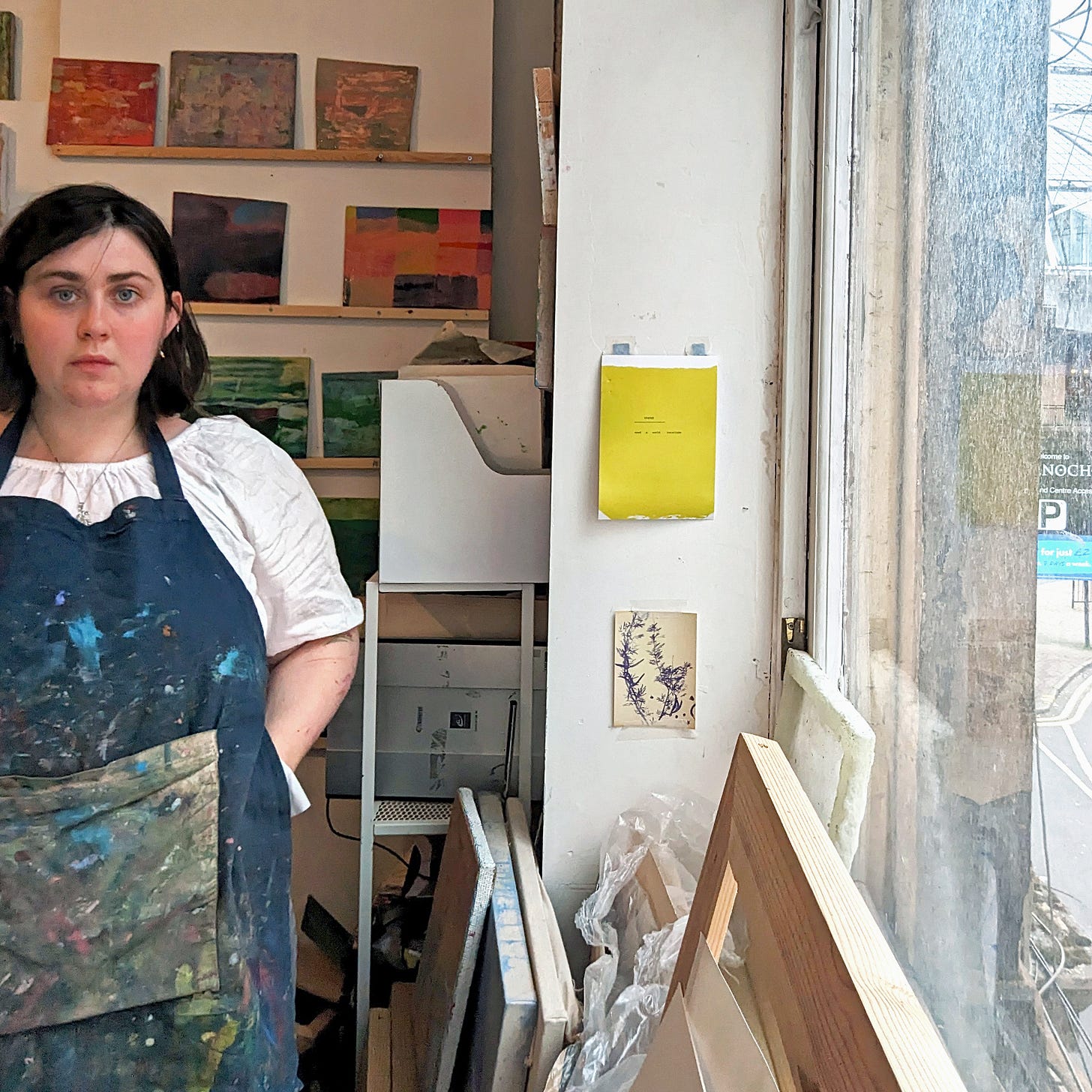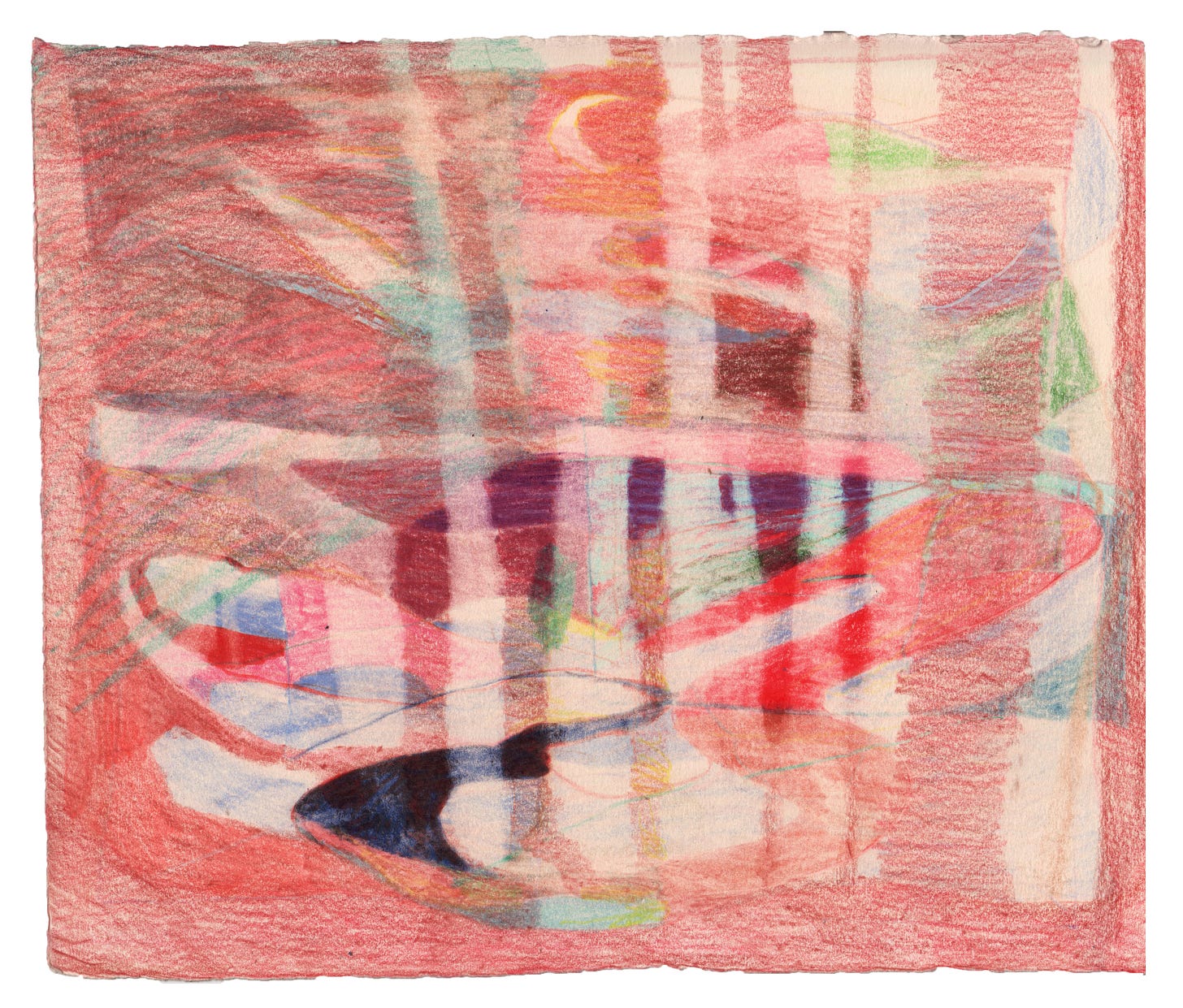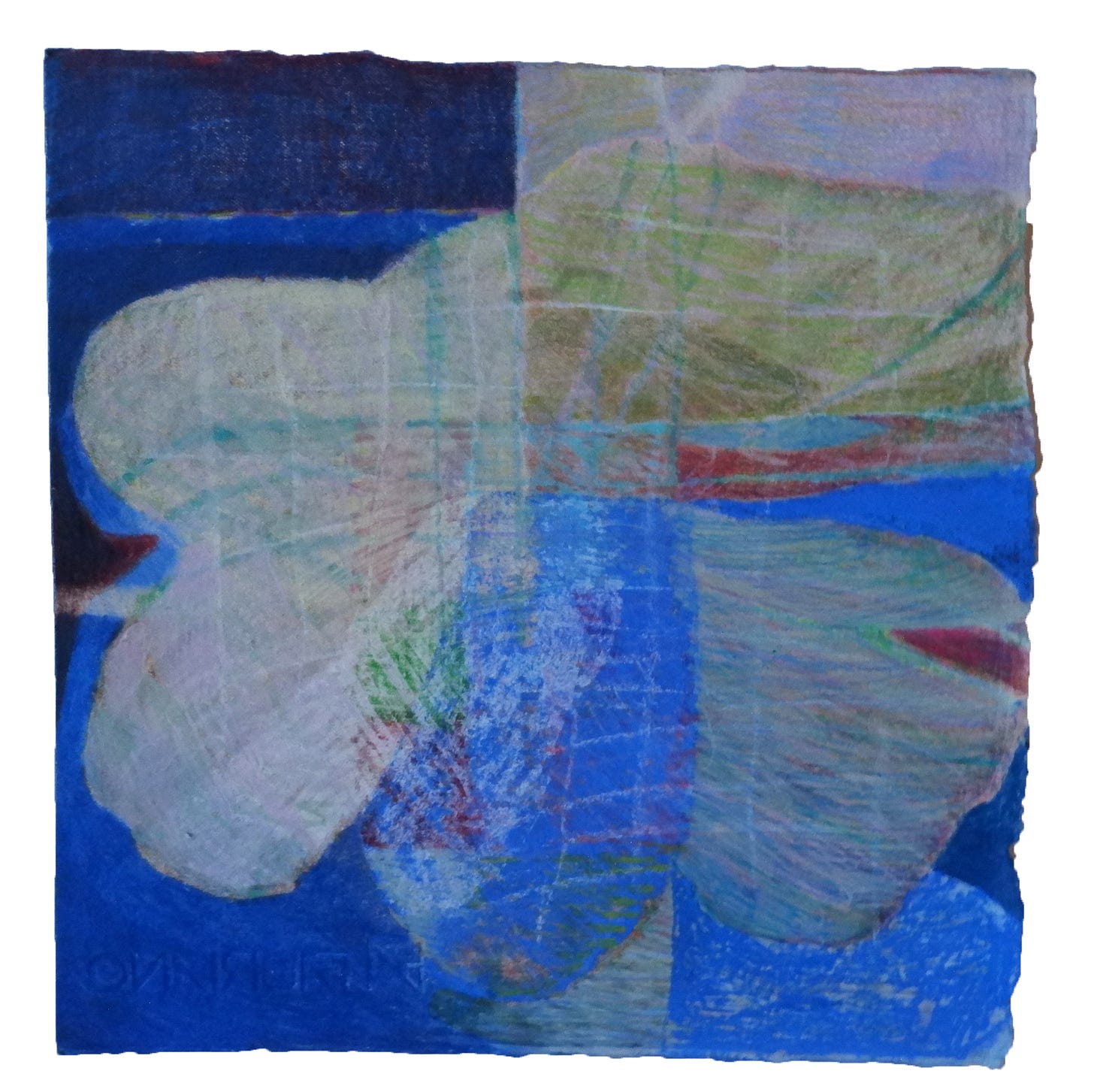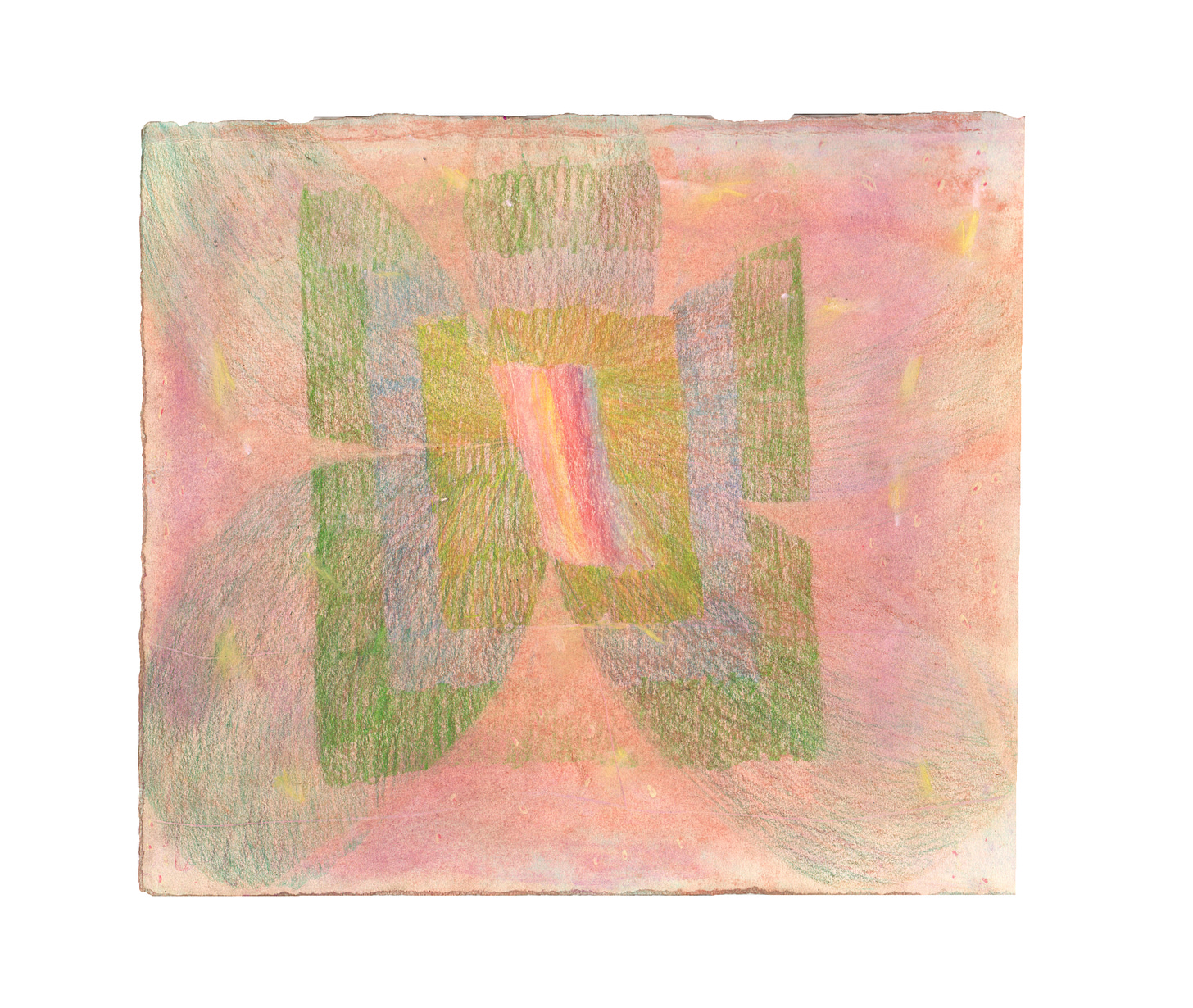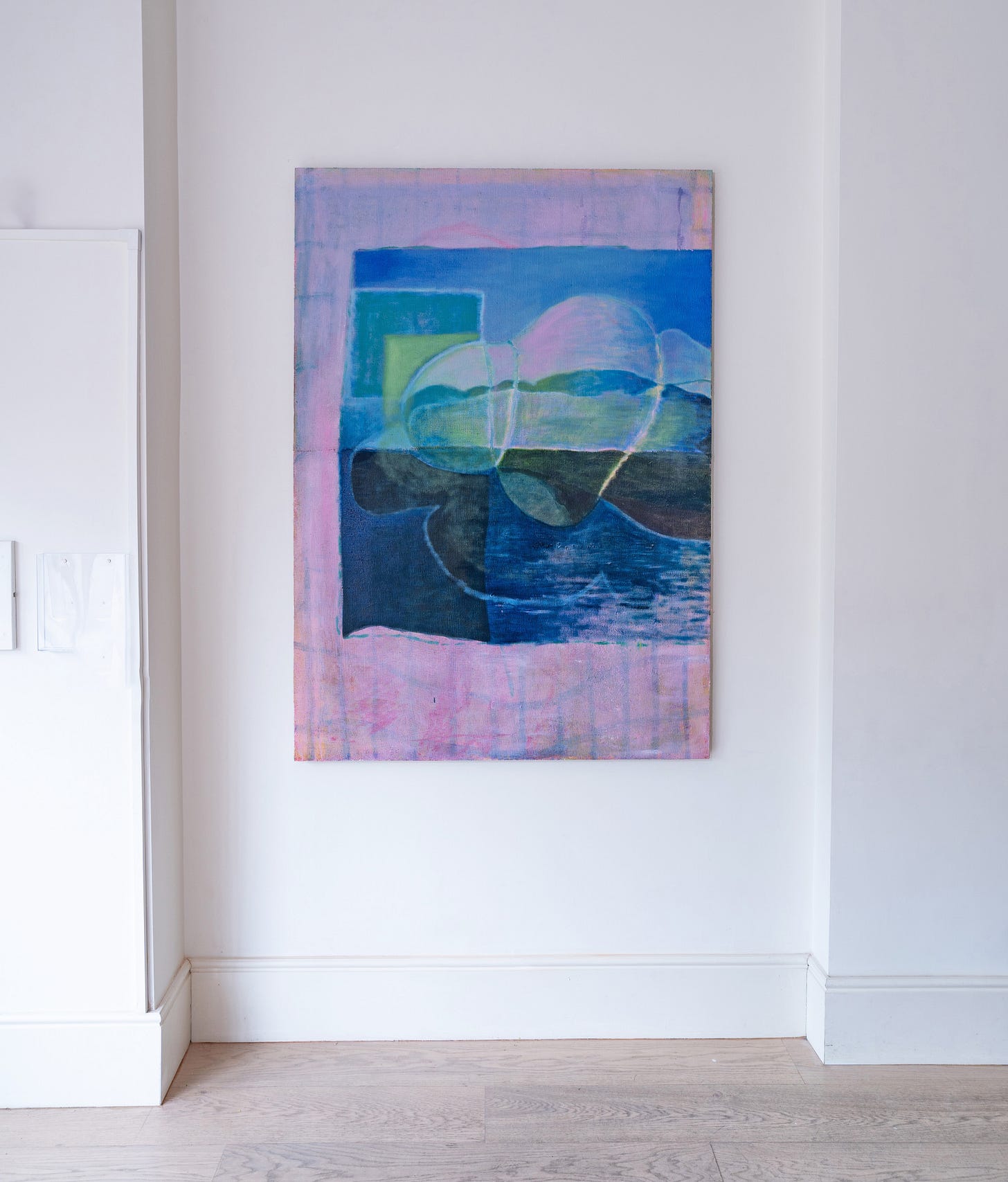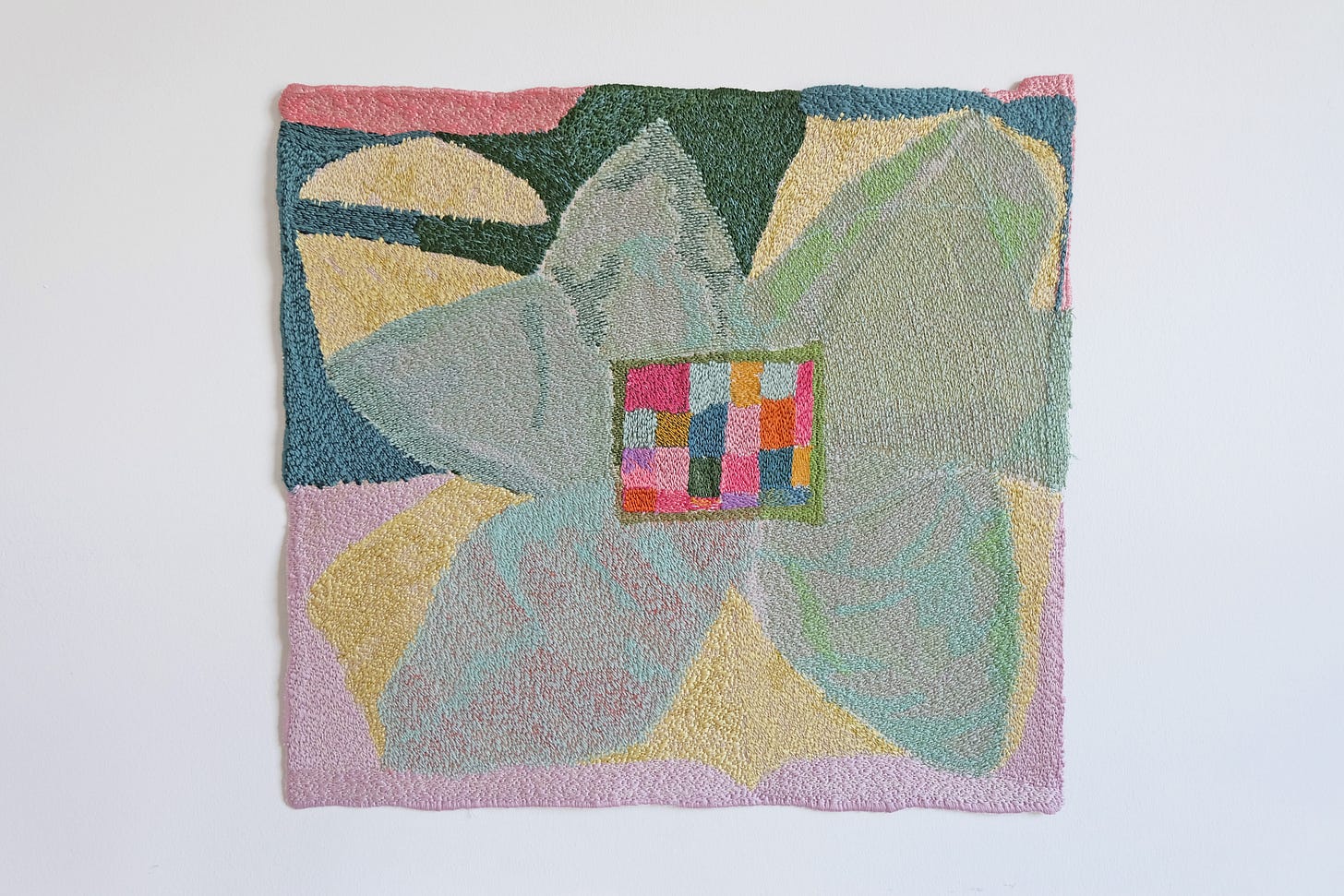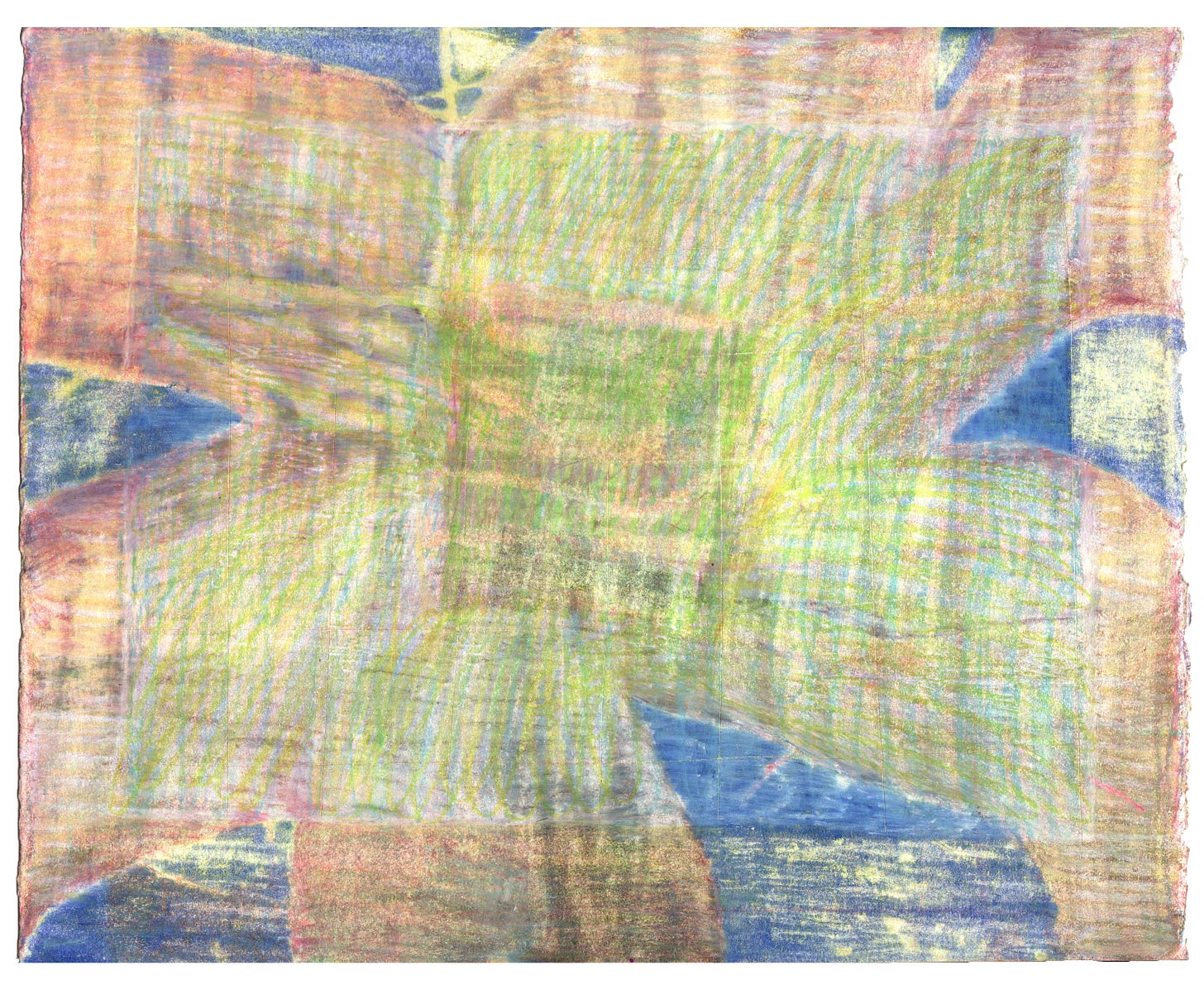Discover the Dreamy Drawings of Orla Kane
The first time I discovered Orla Kane’s work was in the group show VOID, at Praxis Studios in north London. Her colour drawings were small, subtle and intimate. They immediately drew me in. They also made me think about how small drawings are often sidelined in favour of more muscular, large scale painting. Sure, drawings can sometimes be minor works, but in Orla’s case not so much.
What I love about her drawings is that they feel like multi-layered paintings. They’re dreamy and psychedelic, like something you’d find on the cover of a 90s shoegaze album. I love that they have a dominant colour, how they create a cohesive tone, how they seem to vibrate according to the subtle colour shifts and clashes. I think she does this by layering and carefully selecting colours, but truth be told, I have no idea how she does it. That’s part of the allure.
I reached out to Orla - a Scottish artist based in Glasgow - on the eve of the group show ‘Cheer to the Echo’ in which Orla has two new works. I wanted to learn more about what lies behind her masterful use of colour.
Hey Orla. I’ve got to start with your amazing colours. They sort of shimmer and I have no idea how you do it. Is it layers of colour?
With my drawings I think a lot of it is about patience and building up layers. I tend to work on the whole drawing at once instead of focusing on details like layering up from a ground in a painting. I don’t really plan anything. I just react to the colours that are already down on the page and I focus on the weight of marks and also erasing parts of the page, sometimes even the whole drawing to create a soft background to then work up from again.
I think the tension between the two states of saturated colours and paler ghost marks creates shimmery surfaces.
Your pieces look abstract but the forms sometimes suggest stars or moons or nature. Do you work from tangible things that interest you?
I definitely think about nature and landscapes but through the idea of escapism and reinterpretation. I used to take photographs of things around me that interested me but now I tend to write short idioms that are more descriptive of what I see daily. These texts are usually a bit nonsensical but I find they make more sense as I work and they can shape the way I approach a piece.
I’m guessing you’re very particular about your tools. What kind of pencils and crayons are you using?
I absolutely love the convenience of pencils, especially coloured pencils - I don’t think I own any graphite pencils at the moment. I use quite a range of pencils; I have certain colours and textures I prefer from different brands. My go-to are faber castell polychromos for laying down a base layer, for any areas I want a denser layer of colour down or blend colours together I love to use Caran D'ache Luminous and Derwent Procolour pencils. I’d love to say I have them all organised and laid out but I just have a big box that I reach into and hopefully find something that will do!
You also make paintings and it’s interesting to think about switching between those two modes. How does that change things, if at all?
I find the two practices help each other. For a long time drawing was something I would only ever do in a sketchbook, whereas now I tend to draw every day, which has given me so much more respect for it and made me treat it on the same level as painting.
I tend to paint a few times a week so being able to draw in between helps me maintain the threads of colours and forms I’m working with. I try to draw in a similar way to how I paint, thinking about layers and the application and weight of drawing to mimic glazes or thicker paint.
I used to make small works too, and people would always ask when I would scale things up. But there’s something underrated about small pieces, they can be very intimate. What do you think?
I totally agree. I think sometimes as an artist you feel compelled to try and push your work scale-wise and I do love bigger work, but I think at the moment I’m really enjoying working on smaller pieces. Especially working between paper and board, I tear/cut both by hand and I think keeping them smaller allows both my drawings and paintings to share small details like a deckled edge or a wobbly rectangle.
It’s so interesting that you did some recent textile editions of your drawings. How do you feel about them and is that a direction you might pursue more?
I’ve always been drawn to textiles as a medium and a source of inspiration. I think a lot about blankets, fields and fences as patchworks I find in my day to day life, mimicking them as grids in my work, creating or breaking structures and compositions.
I like to think of drawing as weaving colours and lines together so this was an absolute dream to see my drawings come to life through these digitally embroidered textiles. It’s interesting to see how the pieces map out the way I draw and are able to capture the layers of colours. I find it mesmerising!
What can you say about the work you’re showing at the group show, Cheer to the Echo, in Waterloo? We’re looking forward to popping down!
I’m excited to be showing two new drawings, ‘Blond Treasure’ and ‘Move over Moon’. They push my drawing, erasing and scoring technique that I’ve been using over the past year, working more to reveal pockets of the surface of the paper. Both drawings have been worked on intermittently over the past six months and have been built up and worked back, creating an almost psychedelic hazy landscape. The erased space in the drawings leave glowy floral pathways, intertwining and leaving the page like a maze.
Lastly, what do you love and hate about the art world, as you’ve experienced it thus far?
This is such a difficult question. There’s so much to love and hate about the way the art world works. I think at the moment having to rely on platforms like Instagram can be hard. I try to separate it from being a personal reflection and rather try to treat it as work, otherwise it’s a bit overwhelming. On the other hand it’s opened up so many opportunities to me and I have met so many great artists through it so I can’t help but embrace it and try and make the most of it.
Follow Orla on Instagram: @or_o.k
Things on Our Radar This Week
Orla’s work in the group show Cheer to the Echo
Gallery attendants share their stories in this fun feature. Did you know that on average people look at an artwork for just 8 seconds?
The first solo show by Ella Wright (another artist we discovered at the VOID show at Praxis)
The new Warbling open call for artists (deadline 12 July)
Art21 put out a film on Amy Sillman in which she shares some very relatable ideas
Thanks for reading, see you next time!
Oliver & Kezia xx
Palette Talk is free and we hope to grow with your support. If you’ve enjoyed reading, drop us a donation via PayPal…




